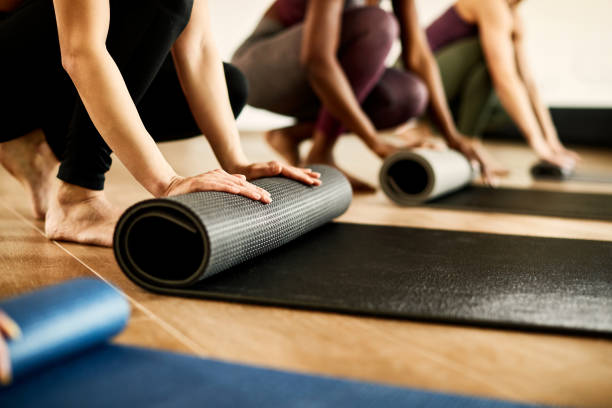Pilates is a low-impact exercise that can be done with or without equipment, making it a versatile workout option for beginners. You can try Pilates in a studio or in gyms like Gold’s.
It focuses on strengthening muscles, improving posture, and increasing flexibility. It involves slow, precise movements and breath control, and typical workouts last between 45 minutes to an hour.
In a 2018 study, participants who practiced Pilates for eight weeks, three times a week, showed improvement in their scores on a functional movement screen, which measures things like stability, balance and mobility, more than people who did yoga instead.
Here are key things you need to know about this type of exercise:
1. Mat Classes Can Be a Helpful Introduction for Beginners
There are two types of Pilates: mat Pilates and reformer Pilates. If you’re new, starting with classes labeled “classic mat” can provide a great entry point because they generally cover the fundamentals and follow an order that helps you become acquainted with activating your deep muscles.
2. Pilates Sessions Can Require Equipment, But They Don’t Need To
There are various pieces of Pilates equipment, including the Wunda chair, Cadillac, spine corrector, high chair, and Magic Circle. While these may not show up in most beginner Pilates mat classes, it’s important to let your instructor know that you’re a beginner so they can keep an eye on you throughout the class and offer modifications or form adjustments.
3. Pilates Is Similar to Yoga, But Different in Some Ways
While both Pilates and yoga are low-impact workouts that emphasize the mind-body connection, they have different approaches and origins. Pilates focuses on building strength and stability in your core areas around your spine, while yoga’s emphasis is more on flexibility.
4. Many Beginner Classes Will Feature the Same Group of Exercises in Each Class
There is an established set of Pilates exercises that are common in beginner classes, including The Hundred, The Roll-Up, Leg Circles, Rolling Like a Ball, and Series of 5. Repeating these exercises in each class helps beginners become familiar with the moves and improves their form.
5. Proper Breathing Is Key to Pilates
Proper breathing is an essential part of Pilates, and it involves breathing deeply and fully into your diaphragm while engaging your core muscles. This technique helps you maintain proper form and control your movements.
6. Pilates Can Help Improve Posture
Many of the exercises target the muscles that help you maintain good posture. By strengthening these muscles, you’ll stand taller, sit straighter, and move with greater ease.
7. Pilates Can Be Adapted to Fit Your Fitness Level
Its adaptability makes it a great workout option for beginners or those with injuries. Your instructor can offer modifications to make the exercises easier or more challenging based on your needs.
8. Pilates Can Help Alleviate Back Pain
In a 2017 study, participants who practiced Pilates twice a week for 12 weeks showed improvement in their chronic low back pain.
Here’s an example of a full body Pilates workout for beginners:
